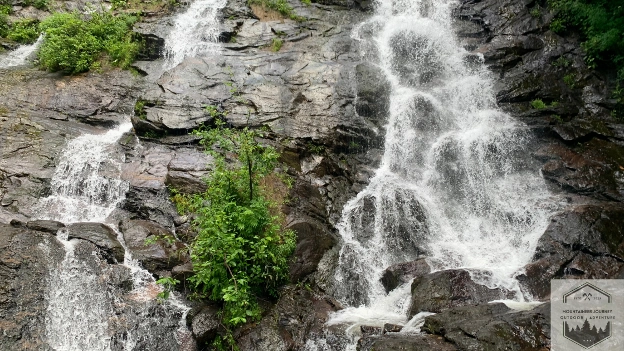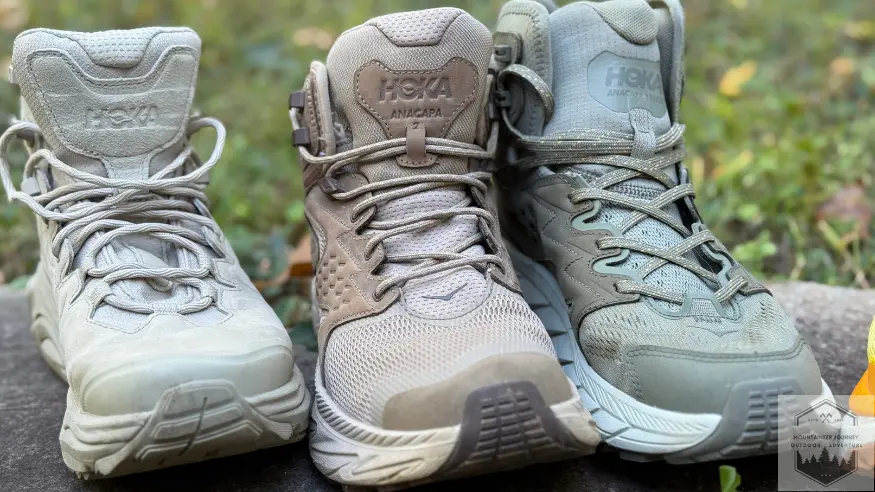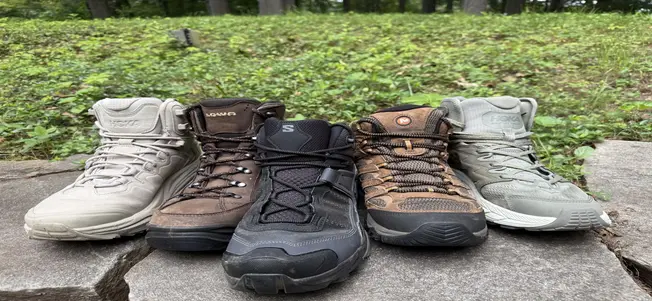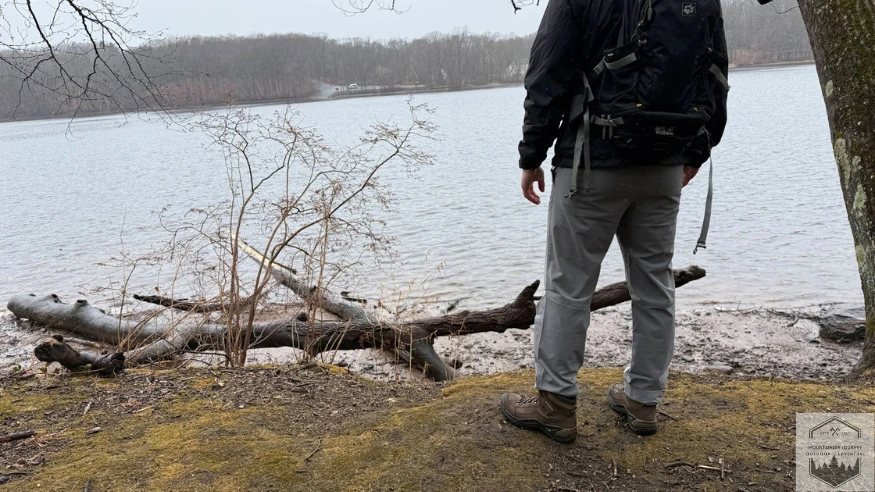Hiking vs Walking | Key Differences Explained

This article delves into the differences between hiking vs walking, examining aspects such as terrain, physical exertion required, necessary equipment, and their respective health advantages to assist you in determining which activity aligns best with your preferences.
Key Takeaways
- Hiking involves uneven terrains, longer distances, and requires specialized gear, while walking is typically done on flat, smooth surfaces with minimal equipment.
- Both activities offer health benefits: hiking can burn more calories and engage more muscle groups, whereas walking is accessible to a wider range of individuals.
- Choosing between hiking and walking depends on personal preferences, fitness levels, and desired intensity, with options available in both natural and urban settings.
Editor’s Note: This article was updated on 5/20/25 with more insights and information.
Defining Hiking and Walking

At first glance hiking and walking seem the same, but they are not.
Defined as a long walk taken for pleasure or exercise, hiking involves walking on uneven and hilly ground. That’s a lot harder.
The average hike is on tough trails that may have soil paths, stony alpine routes and changes in altitude. Mostly done in the beauty of woodlands, mountain ranges and scenic trail ways for hill walking.
On the other hand:
- Walking means moving at a leisurely pace on foot – whether for exercise or a stroll.
- It’s on flat paths with minimal obstacles like city sidewalks, a walk in the local park and smooth tracks.
- Mostly done in urban areas or local green spaces so it’s very accessible.
- Unlike hikes which involve long distances over a mile or more. Walks are short and don’t require any equipment or prep time.
The difference between hiking vs walking becomes clear when you weigh each activity’s duration and intensity.
Hikes are long and hard, walking is short and easy.
For those who like an easy urban jaunt or crave adventure across rough terrain – understanding these differences is key to deciding which type of pedestrian adventure is for you.
Terrain and Environment

The characteristics of the landscape are crucial in distinguishing hiking vs walking. Hiking often unfolds on irregular and challenging surfaces such as rocky trails, steep slopes, and unpaved paths through varying landscapes like woodlands, hillsides, and alpine areas.
These conditions can present more obstacles than those found while walking. Various hiking trails feature a mix of natural elements including brooks to ford or rocks to scramble over alongside shifts in altitude that add an element of adventure.

On the other hand, walking is done on flat ground, which includes city sidewalks, paved paths in parks or around towns and provides a consistent experience with less physical effort — perfect for casual walks.
Whether you like to engage with the unpredictable contours of a nature trail or amble along manicured paths in urban settings will depend on your preference for outdoor wilderness adventures or inner-city strolls.
Required Gear and Preparation

For hiking, preparation and gear is different from walking. The specialized gear for hiking is due to the more demanding terrain and risks off the beaten path. See hiking gear for more info.
To navigate such conditions safely you need to equip yourself with hiking boots that provide good ankle support and grip.
Using trekking poles can help with stability on rough terrain. A first aid kit for emergency situations should be in your essentials list.
Preparing well also means choosing the right trail for your experience level, being informed about the weather ahead of time and gradually increasing hike difficulty to build endurance and confidence. Hiking in summer can be very tough with heat and humidity.
On the other hand, for simple walking activities there’s less complexity with gear – so many can participate.
For comfortable ambulatory excursions what’s most important are good fitting walking shoes that provide cushioning against impact forces that will keep discomfort at bay.
Meanwhile, casual but functional clothing and a water bottle and you’re set so you stay hydrated throughout your walk and have a good time.
Hiking Gear
Hiking requires proper equipment. You need to wear closed-toed shoes.
Comfortable hiking boots can be the difference between disaster and a good time while traversing terrain and supporting your ankles.
Hiking Boots
Your hiking boots don’t have to be anything special. Something as simple as the Merrell Moab 3 can accompany you on your hike.
The Moab 3 are our best budget hiking boots. For $160 you can have a pair of hiking boots for years to come.For carrying essentials, get a daypack with 10-20 liters capacity, perfect for short trips. Bring enough water and snacks to keep you energized throughout the journey.
Never underestimate the importance of including a basic first aid kit in your gear – this should have bandages, alcohol pads, gauze rolls/pads and antibiotic creams or ointments for minor injuries.
Reliable navigation tools like maps and compasses are crucial when venturing into unknown areas. Being equipped with these essentials will even seasoned hikers feel more confident when tackling more challenging trails.
Walking Gear

Physical activity doesn’t have to be complicated and walking is a perfect example. The most important item you need is a pair of comfortable walking shoes that provide support and cushioning especially if you’ll be covering longer distances. This makes the activity accessible to many since even casual shoes can do for a walk.
A water bottle should also be with you on your strolls to stay hydrated along the way. Wearing comfortable and free moving attire will improve your walking experience. Given the minimal gear required, incorporating walking into your daily routine is an easy and efficient way to stay active.
Physical Exertion and Calories Burned

Hiking and walking have different levels of physical activity and calorie expenditure. Hiking involves navigating uneven terrain, varying elevations and often requires specific gear. This makes it a more strenuous activity compared to walking.
Hiking usually takes several hours or even days and covers longer distances in natural settings than the average walk, with factors like fluctuating elevations, variable weather conditions and the added weight of carried supplies making it more intense.
On the other hand, walking is a less demanding physical activity that’s shorter in duration. It’s a gentle option often done at a leisurely pace, primarily engaging the muscles in the lower legs.
Both are great physical workout routines to maintain fitness but hiking is recognized for more intense workouts that burn more calories than standard walks do. Both can help you lose weight.
Hiking vs Walking Calories
As trails get steeper and backpacks get heavier, the calorie burning rate during hiking climbs even more due to these added efforts.
Someone who weighs around 80 kg might burn about 1200 calories after a demanding 20 km hike with 1000 m elevation gain.
The intensity and physical demands of each activity is where you’ll find the main difference. So while it’s more arduous than walking—hiking is also a more effective exercise for those who want to see results from their workout.
Muscles Worked

Compared to walking, hiking engages more muscle groups because it requires stabilization on uneven terrain. The need for balance intensification is especially true during ascents as the body exerts more effort.
Hiking is an all-around exercise that works out not only the legs and core but also the upper body when using hiking poles.
Walking engages fewer muscles overall since it’s done on flat ground that offers less challenge in terms of balance.
Considered a low-impact activity, walking primarily exercises the muscles in the lower extremities.
So while both activities are good for physical health, hiking is a more intense full-body workout by engaging more muscle groups.
Health Benefits of Hiking and Walking
Engaging in physical activity like walking or hiking can have many health benefits. Starting a routine that includes either of these activities may improve cardiovascular health and reduce the risk of respiratory diseases.
Consistently doing hikes or walks can positively contribute by increasing heart rate efficiency, lowering blood pressure, reducing high cholesterol levels, improving metabolic function and reducing the risk of heart disease. A daily 30 minute walk has been linked to up to 19% decrease in coronary heart disease risk.
Mental health is also boosted through regular outdoor activities like hiking or walking. Being in nature has been shown to greatly improve mood and mental well-being.
Trekking outdoors is an effective way to reduce stress indicators and anxiety symptoms—outdoor excursions are linked to lower incidence of stress-related conditions, depression-related feelings and negative thought patterns—all contributing to overall mental health improvement.
Hiking vs walking for Weight Loss

If you’re starting your hiking journey for weight loss you’ll see results. Some people report losing around 12 pounds once they do this consistently.
Walking is great not only for maintaining healthy body weight but also for reducing chronic diseases’ risk factors.
Between the two – whether it be the structured ambulatory exercise of walking or the adventurous explorations of hiking–these are powerful contributors to overall well-being.
From Walking to Hiking
If you want to transition from regular walking to hiking trails, start with shorter hikes that won’t overwhelm you.
Choose routes that are not only short but also less demanding and work your way up incrementally. Start with easy day hikes that are often found in national parks or nearby trail networks.
As your body adapts, aim to increase your walking distance by 10-20% weekly, setting a strong foundation for more challenging hikes.
To prepare for the physical demands of hiking, incorporate strength training exercises for leg and core muscles into your routine as these areas are crucial for stability and endurance on uneven terrain.
Do balance exercises like single-leg stands to get used to irregular surfaces found in outdoor trails, using stairs in your exercise regime can be very effective in building muscular power needed when facing steep inclines during hikes.
Make walks mimic what you’ll experience on actual hiking trails even more. Vary walkways underfoot and wear full gear suited for treks.
Start this adventure in the great outdoors by choosing beginner-friendly local spots first then gradually increase length and difficulty within those environments.
All part of preparing yourself optimistically yet realistically towards meeting greater challenges head-on across various rugged landscapes waiting to be discovered through passionate pursuits like trekking out there in nature’s splendor. Read here for more info on training for hiking.
Choose Your Activity

Some thru hiking trails feature beautiful shorelines, with famous routes like the Pacific Coast Trail and the Cinque Terre in Italy. Waterfall hiking is popular for its scenic beauty, with notable spots like the Columbia River Gorge and Yosemite National Park.
If you prefer a less strenuous activity, walking is a great way to stay active with minimal equipment and preparation. Consider your fitness goals, the type of terrain you like and the level of physical exertion you’re comfortable with.
Whether you choose hiking or walking, both are great forms of physical exercise and opportunities to explore beautiful places.
Popular Hiking and Walking Spots

Virginia is famous for its many hiking trails for all levels, from easy walks to moderate treks to more challenging hikes.
Gohikevirginia.com allows you to find the perfect hike by displaying color-coded trails along with details on trail length, elevation gain and terrain type.
From the scenic Blue Ridge Mountains to the lush Shenandoah National Park, Virginia’s trails are a haven for outdoor enthusiasts.
For those who prefer city strolls over wilderness trekking, cities around the world have plenty of parks with pathways designed for walking in comfort.
These urban routes vary and include well-designed parklands as well as picturesque city streets suitable for relaxed ambles through their surroundings.
Whether you’re strolling through New York City’s iconic Central Park or taking in historic European avenues lined with characterful buildings—urban walkways offer a unique perspective on each city’s cultural fabric and built environment.
Conversely if you want both man-made landscapes intertwined with nature’s beauty consider visiting local parks with natural trails these spaces merge ease-of-access of urban areas with nature’s charm thus offering dual benefits.
Whether it be coastal footpaths or woodland climbs, choosing such spots can greatly enhance your experience whether you opt for a casual walk or a hike.
Conclusion

In summary, hiking and walking are both great forms of physical activity with different characteristics and benefits.
Hiking involves more challenging terrain, requires special equipment and is more intense so it’s ideal for those who want an adventurous and calorie-burning activity.Walking is more accessible, requires minimal gear and is perfect for those looking for a simple way to stay active.
Whether you lace up your hiking boots or slip into your walking shoes, both activities offer many health benefits including cardiovascular fitness, mental well-being and weight management.
The key is to find the right activity for you, your fitness level and lifestyle. Get out there and enjoy the journey, whether it’s a rugged trail or a city park.
FAQ
What’s the main difference between hiking and walking?
Hiking involves natural terrain that’s often uneven and irregular, whereas walking is on flat, paved surfaces in urban areas.
Do I need special equipment for hiking?
Yes, you’ll want hiking boots, a backpack and a first aid kit to stay safe and comfortable on the trails.
How many calories can I burn hiking?
While hiking an individual burns around 450 calories per hour. This can increase with elevation gain or carrying a backpack during the activity.
For me, hiking can burn a lot of calories for longer trails over 3 miles. Elevation adds to the calories burned.
What are the benefits of walking?
Walking is good for you—it lowers the risk of chronic diseases and improves heart health while boosting your mood and reducing stress.
How do I go from walking to hiking?
Start by choosing short, manageable hiking trails and gradually move to longer and more challenging ones.
Add strength and balance exercises to your fitness regime and practice on staircases to get ready for the inclines on tougher hikes.
Adventure Awaits,
Tyler






